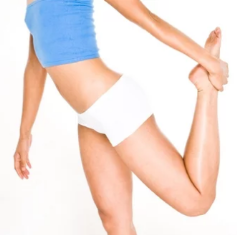It happens in an instant, on the sports field or even in your own bed: a Charley horse. This painful spasm can last anywhere from a few seconds to several minutes (in some cases even days!), and usually incapacitates its victim. Knowing the causes of the affliction, however, could help prevent future outbreaks.

What is a Charley Horse?
The term Charley horse — also known as jolly horse, dead leg, nocturnal leg cramp, and corky in some parts of the world — refers to sudden and painful cramps and/or spasms, typically felt in the lower leg muscles (especially the calf).
What Causes a Charley Horse?
While the medical community has yet to agree on an exact cause of the Charley horse, doctors believe it can be brought on based on several factors, including:
- hormonal imbalance
- calcium/potassium deficiency
- dehydration
- medication side effects
- pregnancy
- and more
Charley horse is also attributed to more serious afflictions, such as amyotrophic lateral sclerosis and neuropathy.

Charley Horse Cures
There is currently no “cure” for Charley horse. Instead, medical professionals have several recommendations on how victims of this affliction can seek relief. These include:
- massaging or stretching the affected area in the opposite direction of the spasm
- applying ice to the affected area
- applying heat to the affected area
Charley Horse Prevention
Doctors have determined several factors that may ease and/or prevent future attacks, including:
- increased potassium/calcium intake (as found in bananas and dairy products)
- increased hydration
- slower movements (no rapid twists and turns)
- stretching muscles before and after exercise
- vitamin supplements (B-12, magnesium, vitamin E)
- wearing comfortable, supportive footwear
- loosening bed clothing and/or bed sheets
However, because there is no “cure” for Charley horse, it is possible that some people will continue to be plagued by the painful spasms, regardless of the prevention steps they may take. ■
by Raul Lisneski
Health & Wellness Editor
Residential Life Magazine